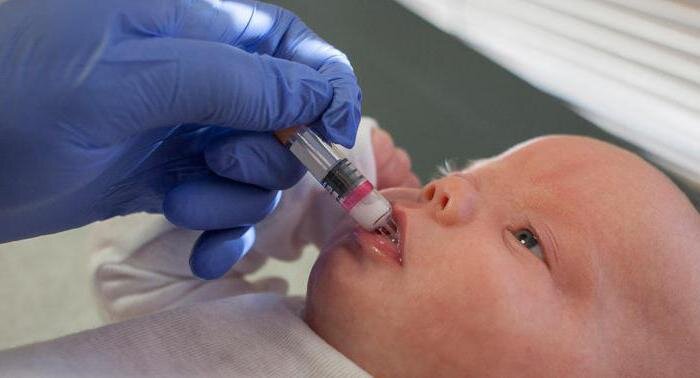Iran develops two vaccines of rotavirus, pneumococcus

TEHRAN – Two vaccines of rotavirus and pneumococcus, domestically made by the Pasteur Institute, will enter the country's vaccination cycle next year (starting March 21, 2022) to inoculate children.
The pneumococcal or pneumonia vaccine for children is included in the vaccination program of 70 percent of the world, and soon Iranian children will be able to receive this vaccine produced in the country, Delaram Doroud, vice president of production at the Pasteur Institute said.
BCG, polio, hepatitis B, measles, rubella, and mumps (MMR) vaccines are injected to infants and children in Iran. Reminding that the infrastructure for the production of the rotavirus vaccine is fully ready, she stated that the technology transfer contract for this vaccine has been concluded and we are ready to produce it in the near future.
Due to the prevalence of coronavirus, the process of technology transfer, and exchange of specialists and supply of pneumococcal vaccine equipment was somewhat slow, and according to the follow-up of the Pasteur Institute, however, it will be finalized soon, she explained.
The Pasteur Institute has been producing BCG vaccines for infants, intravesical BCG, and hepatitis B for decades.
BCG, polio, hepatitis B, measles, rubella, and mumps (MMR) vaccines are among the vaccines in the general vaccination package and are injected to infants and children in Iran.
Pneumococcus
Diseases caused by Streptococcus pneumoniae (the pneumococcus) are a major public health problem worldwide. In the developing world, young children and the elderly are most affected; it is estimated that about one million children die of pneumococcal disease every year.
Streptococcus pneumoniae is an encapsulated bacterium with a polysaccharide capsule an essential factor in virulence. About 90 distinct pneumococcal serotypes have been identified throughout the world, with a small number of these serotypes accounting for most diseases in infants. Pneumococci are transmitted by direct contact with respiratory secretions from patients and healthy carriers.
Rotavirus prevalence
Infection by rotaviruses is one of the major causes of childhood diarrhea with an associated high mortality rate (440,000 deaths/year) and is responsible for 25 million medical visits and 2 million hospitalizations every year, especially during the cold season.
The prevalence of rotavirus infections in Iran has been estimated as 30 -50 percent while the mean prevalence is reported to be 39.9 percent. According to a WHO report, in Iran, 42 percent of gastroenteritis are caused by rotaviruses which are estimated to have inflicted approximately 2000 and 270 deaths in 2008 and 2013, respectively.
This pattern indicated that the rate of rotavirus-caused diarrhea for Iranian children is similar to the rate in the Eastern Mediterranean region. The prevalence of rotavirus infection is varied in different regions of Iran. For instance, this rate is 6.3 percent for Birjand in South Khorasan province and 79.2 percent for Tehran.
In June 2021, the Pasteur Institute of Iran and Indian Bharat Biotech inked a memorandum of understanding (MOU) to transfer technical knowledge of the rotavirus vaccine, IRNA reported.
FB/MG
